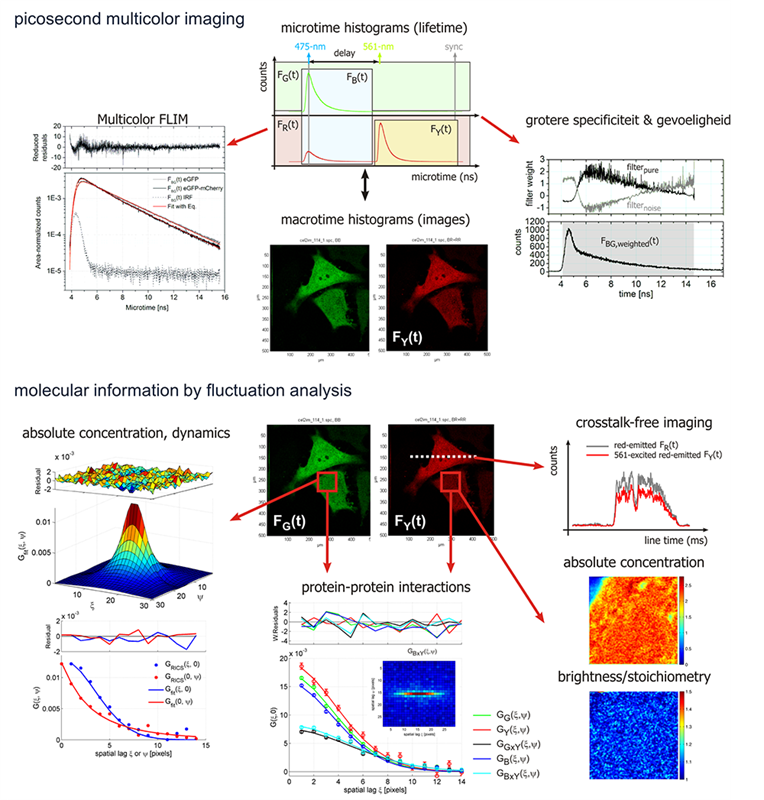Time-resolved fluorescence
Fluorophores hide a wealth of information in the way they fluoresce! We specialize in time-resolved methods for quantifying fluorescence lifetimes and anisotropy.


Phasor FLIM
To avoid pixel-based decay fitting, and complementary to whole-image FLIM analysis, we also specialize in advanced Phasor-FLIM analysis. This is a graphical way (via the phasor plot) to false-color intensity images with lifetimes, lifetime fractions or FRET efficiencies.

Pulsed interleaved excitation imaging
Furthermore, we combine time-resolved spectroscopy with imaging and fluctuation methods, which allows detailed investigations of complex biological systems.

Polarization / Anisotropy
We also specialize in steady state and time-resolved anisotropy, whether or not in combination with imaging. Our commercial confocal LSM880 is also equipped for polarized SHG.

